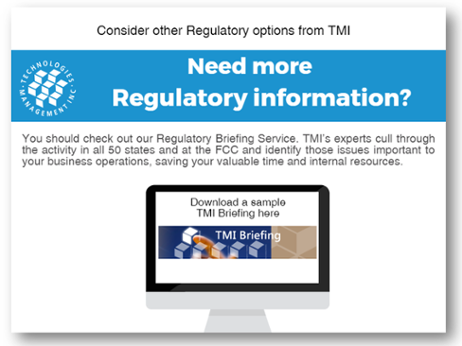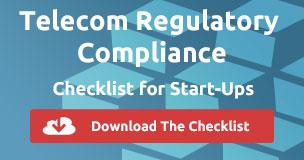 What will the FCC be tackling next?
What will the FCC be tackling next?
Chairman Pai said “the FCC will end 2017 not with a whimper but a bang.” He’s not kidding! I’m sure you’ve seen and heard the commentary for and against the draft order that would reclassify broadband Internet access service (BIAS) so that it is once more considered an information service and not a telecommunications service. But the FCC will also be tackling less controversial, but no less important items such as finally resolving the issue of collocation on so-called “Twilight Towers,” modernizing its wireless rules, reviewing the rural health care program, and authorizing “Blue Alerts.” The FCC will also be considering allowing cable providers to send certain notices electronically, rather than by paper mail, and will reexamine the national television ownership cap. A full agenda! So, let’s take a closer look at some of the issues the FCC will be addressing.
 Net Neutrality/Open Internet: Starting with the 800 pound gorilla in the room, the “Restoring Internet Freedom” draft order would reclassify BIAS as an information service and eliminate the three so-called “bright line” rules (no blocking, no throttling, no paid prioritization) as well as the “catch-all” general conduct standard. Only a modified version of the 2010 transparency rule would be retained.
Net Neutrality/Open Internet: Starting with the 800 pound gorilla in the room, the “Restoring Internet Freedom” draft order would reclassify BIAS as an information service and eliminate the three so-called “bright line” rules (no blocking, no throttling, no paid prioritization) as well as the “catch-all” general conduct standard. Only a modified version of the 2010 transparency rule would be retained.
With respect specifically to transparency, the draft order would require BIAS providers to “publicly disclose accurate information” regarding their network management practices and the performance and commercial terms of their services sufficient to enable consumers to make informed choices regarding the purchase and use of such services and entrepreneurs and other small businesses to develop, market, and maintain Internet offerings.” Disclosures would need to be made via a publicly available, easily accessible website or through transmittal to the FCC (who would then make them available on a website). Helpfully, the draft also contains a list of the eight specific network management practices that must be disclosed (including blocking, throttling, paid/affiliated prioritization, and security practices), as well as the two performance characteristics and three commercial terms (price, privacy policy, and redress options) that must also be disclosed. The draft also does away with the current small provider exemption as well as the safe harbor broadband disclosure (aka nutrition) labels.
The draft order would also:
- Restore the previous classification of wireless broadband service as an information service and reverse the assertion of jurisdiction over Internet traffic exchange.
- Preempt any state or local measures that would impose rules or requirements that the FCC is now repealing, as well as any requirements it “decided to refrain from imposing in this order or that would impose more stringent requirements for any aspect of broadband service that we address in this order.” Among other things, all “economic” or “public utility-type” regulation would be preempted including common-carriage requirements. Notably, the order would not “disturb or displace the states’ traditional role in generally policing such matters as fraud, taxation, and general commercial dealings, so long as the administration of such general state laws does not interfere with federal regulatory objectives.”
- Return jurisdiction to regulate broadband privacy and data security to the Federal Trade Commission.
- Remove the enforcement mechanisms adopted in the 2015 Order (Ombudsperson, formal complaint rules, and advisory opinions) and instead rely on the FCC’s existing informal complaint procedures, as well as antitrust and consumer protection laws, to ensure that ISPs continue to be held accountable for their actions.
 Twilight Towers: So-called Twilight Towers are towers constructed between March 16, 2001, and March 7, 2005, that cannot be shown to have completed the historic preservation review set forth in Section 106 of the National Historic Preservation Act (NHPA). The proposed public notice would seek comment on a draft “Program Comment” addressing the historic preservation review requirements for collocating communications equipment on Twilight Towers. The Program Comment would exclude from Section 106 review the collocation of wireless communications facilities on Twilight Towers so long as they satisfy the conditions that were agreed to in the Nationwide Programmatic Agreement for the Collocation of Wireless Antennas. This action would open up potentially thousands of existing towers for collocations without the need for either the collocation or the underlying tower to complete an individual historic review, thus ensuring that these towers are generally treated the same as older towers that are already excluded from the historic review process.
Twilight Towers: So-called Twilight Towers are towers constructed between March 16, 2001, and March 7, 2005, that cannot be shown to have completed the historic preservation review set forth in Section 106 of the National Historic Preservation Act (NHPA). The proposed public notice would seek comment on a draft “Program Comment” addressing the historic preservation review requirements for collocating communications equipment on Twilight Towers. The Program Comment would exclude from Section 106 review the collocation of wireless communications facilities on Twilight Towers so long as they satisfy the conditions that were agreed to in the Nationwide Programmatic Agreement for the Collocation of Wireless Antennas. This action would open up potentially thousands of existing towers for collocations without the need for either the collocation or the underlying tower to complete an individual historic review, thus ensuring that these towers are generally treated the same as older towers that are already excluded from the historic review process.
CMRS Presumption: Mobile services are categorized as either commercial (CMRS) or private (PMRS). The FCC’s rules assume that services in certain frequency bands will be regulated as CMRS, absent a showing by the licensee to the contrary. However, numerous frequency bands have now been opened to flexible use, allowing providers to choose whether to operate as CMRS or PMRS. The Report and Order would remove the CMRS presumption and allow licensees to rely on the statutory definitions to identify the nature and regulatory treatment of their mobile services based on the use of the licensed spectrum, rather than the spectrum band being used. It would also harmonize the FCC’s licensing rules across spectrum bands, removing rules that apply to some bands but not to others.
 Rural Healthcare: The Rural Health Care (RHC) Program supports access to telehealth services and helps rural communities overcome obstacles to accessing healthcare. For the second year in a row, demand is expected to exceed available support. The draft order would: (1) waive the RHC program’s budget cap on a one-time basis and instruct USAC to carry forward any unused RHC Program funds from prior funding years for use in FY 2017; and (2) allow service providers to voluntarily reduce their rates for qualifying FY 2017 requests while keeping constant the support amount provided by the Universal Service Fund. The Notice of Proposed Rulemaking would begin a review of the program by seeking comment on increasing the program’s annual budget, creating a prioritization mechanism in the event demand exceeds the cap, and establishing a process for evaluating outlier funding requests and reforming the calculation of urban and rural rates.
Rural Healthcare: The Rural Health Care (RHC) Program supports access to telehealth services and helps rural communities overcome obstacles to accessing healthcare. For the second year in a row, demand is expected to exceed available support. The draft order would: (1) waive the RHC program’s budget cap on a one-time basis and instruct USAC to carry forward any unused RHC Program funds from prior funding years for use in FY 2017; and (2) allow service providers to voluntarily reduce their rates for qualifying FY 2017 requests while keeping constant the support amount provided by the Universal Service Fund. The Notice of Proposed Rulemaking would begin a review of the program by seeking comment on increasing the program’s annual budget, creating a prioritization mechanism in the event demand exceeds the cap, and establishing a process for evaluating outlier funding requests and reforming the calculation of urban and rural rates.
Blue Alerts: Blue Alerts may be used by state and local officials to notify the public of threats to law enforcement. The Report and Order would add a dedicated Blue Alert (BLU) event code to the FCC’s Emergency Alert System (EAS) rules and require implementation of Blue Alerts within the EAS within 12 months. It would also allow Blue Alerts to be delivered as “Imminent Threats,” and require implementation of Blue Alerts within the Wireless Emergency Alerts System within 18 months.
Cable Communications: FCC rules currently require cable operators to provide written information or written notices to their subscribers about various topics. The Notice of Proposed Rulemaking would revise these rules to allow certain types of written communications to be delivered electronically so long as they are sent to a verified e-mail address that includes a mechanism for customers to opt out of e-mail delivery and continue to receive paper notices. The draft also seeks comment on whether to allow cable operators to: (1) provide certain written notices to subscribers by posting the written material on the cable operator’s website; (2) deliver subscriber privacy notifications via e-mail, subject to consumer safeguards; and (3) respond to consumer requests or billing dispute complaints by e-mail if the consumer used e-mail to make the request or complaint or if the consumer specifies e-mail as the preferred delivery method in the request or complaint.

Get out the popcorn: if the dueling fact sheets released by Chairman Pai and Commissioner Clyburn (See the Regulatory Mix dated 11/28/17) are any indication of the rhetorical fireworks we can expect, December 14, 2017, should be a colorful display!






